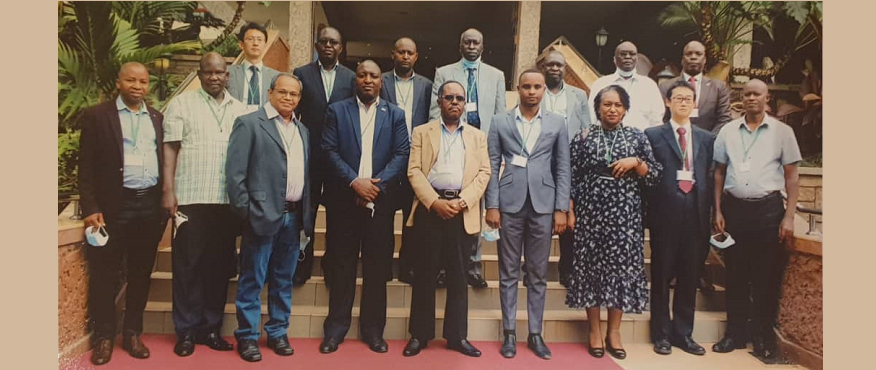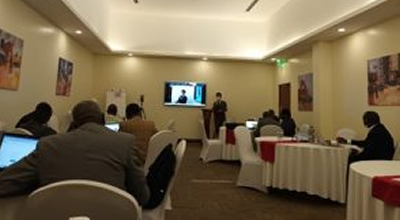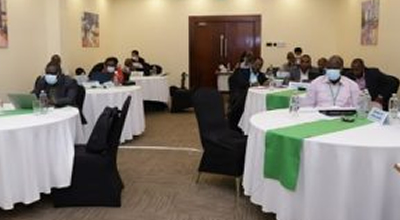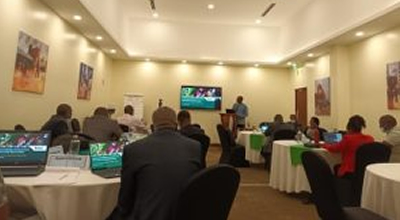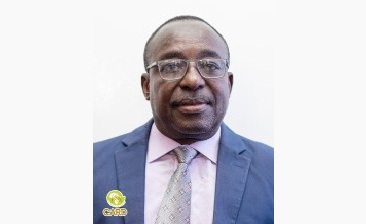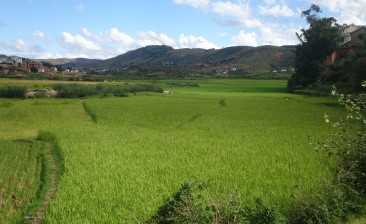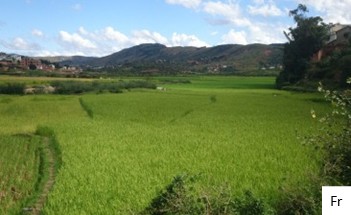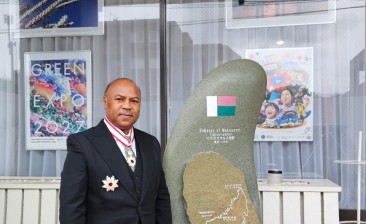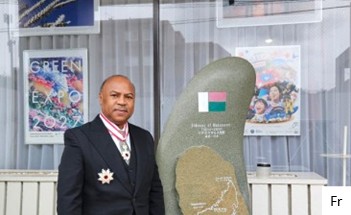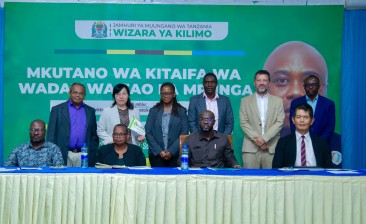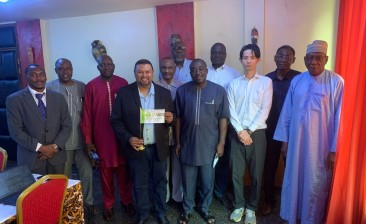EAC Rice Development Strategy (ERDS), June 2022
CARD Working Week (WW-2) for formulating East African Community (EAC) Regional Rice Development Strategy (ERDS) on 13 – 17 June 2022
East African Community (EAC) region is a net importer of rice. FAO data shows that the region cumulatively imported 1,118,182 tons of milled rice equivalent, worth about 423.35 million USD in 2020. Although the quantity of annual imports varies among EAC partner states; domestic rice production generally lags behind market needs, in terms of quantity and quality. All partner states, except Republic of South Sudan, have formulated National Rice Development Strategy (NRDS) for advancing the efficiency of rice value chain in their respective countries. Key strategic approaches under the NRDSs of partner states involve ramping of production, on-farm productivity and enhancing competitiveness of the locally produced rice.
Proposed NRDS interventions on increasing rice production and productivity in partner states generally revolve around improved access to markets for inputs such as seeds of improved varieties, fertilizers and machineries, and output markets. Since the EAC region is fast becoming economically integrated, ‘interconnectivity of partner states’ in accessing productivity-enhancing inputs and output markets become critical in achieving the ambitions under the NRDSs of partner states. Furthermore, improving competitiveness of the locally produced rice against imported rice require common and united policy actions by the partner states for minimizing negative impacts of imported rice on domestic rice industry.
To improve the integration of rice sector development efforts of partner states in the region, EAC has set up an EAC Rice Platform (ERP). CARD, in partnership with EAC Secretariat, helped ERP establish a framework for formulating EAC Rice Development Strategy (ERDS) through a working week (WW-1) in May 2022. Since further elaboration of the ERDS framework was required for identifying key regional interventions, indicators and institutional set up for implementation; a second working week (#2) was organized by EAC Secretariat and CARD Secretariat. This report provides a brief summary of outputs from the second working week (ERDS WW-2).
CARD activity and the results
The WW-2 was intended to (i) identify key interventions under ERDS, (ii) acknowledge what EAC and CARD do during implementation of the ERDS and their limitations, (iii) explore how ERDS implementation could be institutionalized, and (iv) enlist possible indicators for monitoring and evaluation of the ERDS implementation.
The working week was organized at Sarova Panafric Hotel from 13th to 17th June. Two members each from the 5 partner states (Republics of Burundi, Kenya, South Sudan and Uganda) and three members from United Republic of Tanzania physically participated in the WW-2. Participants from Rwanda joined online throughout the WW-2. Resource persons (invited speakers) joined either physically or virtually online.
Following opening remarks from the Secretariats of CARD and EAC, the participants briefed on how and to whom outputs from the previous WW (WW-1) were conveyed in their respective countries, and how they were perceived. NRDS focal point of Democratic Republic of Congo (DRC), who joined online, briefed the participants on current status of rice sector development.
Regional Consultant for CARD refreshed the participants on the strategic framework drawn during the WW-1 and guided them on estimating projections on rice consumption requirement for the EAC region. It was acknowledged that achieving self-sufficiency in rice production in order to meet the consumption requirements may be too ambitious and may not be realistic. Hence the participants agreed that doubling current rice production levels (that would allow local production meet about 75% of the requirement) by 2030 shall be set as a tangible goal for the ERDS.
The participants were then grouped into two, with each group having at least one representative from the 6 partner states. Using a matrix, the Consultant guided the groups on how to identify key interventions that will lead to achieving the five objectives set out under the strategic framework. The matrix allowed the group members to discuss and enter interventions for two specific objectives each, under different categories viz., regional research, regional extension, regional infrastructure, regional institutions and policy. Sustainability, a cross cutting objective of the framework, was included under each of the other four specific objectives.
After identifying the major interventions for the two specific objectives each, the two groups peer-reviewed the outputs together. The two groups later also discussed and enlisted key performance indicators that could be used to track implementation of the ERDS. In this context, CARD Secretariat proposed 4 major and 2 specific indicators each under Resilience, Industrialization, Competitiveness and Empowerment (R.I.C.E) approach – a total of 12 indicators. The participants agreed that the key performance indicators identified under the specific objectives, shall be combined with the four CARD’s major indicators and that the 8 R.I.C.E. indicators proposed by CARD Secretariat shall be refined in accordance with the contexts of the ERDS.
The participants acknowledged that it is essential to institutionalize the ERDS implementation and proposed setting up of ‘EAC rice desk’. A position of EAC rice advisor shall be required for managing the EAC rice desk, and shall be funded through regional projects and/or through direct financial assistance from development partners. The EAC rice advisor, in collaboration with ERP members and NRDS focal points, will liaise with EAC Secretariat, CARD Secretariat, regional development partners, EAC partner states and private stakeholders, facilitate linkages, and oversee implementation of the ERDS.
Way forward
ERDS requires to be drafted and validated by stakeholders at regional levels by mid-October so that the ERDS could be officially approved by EAC’s Council of Ministers when they meet during November 2022.
